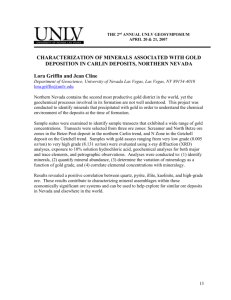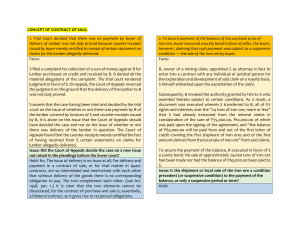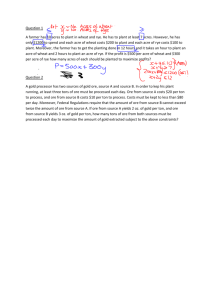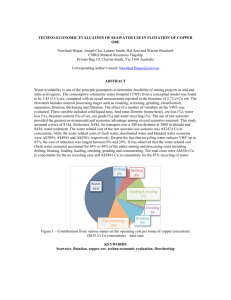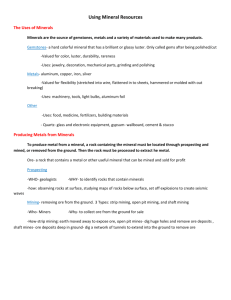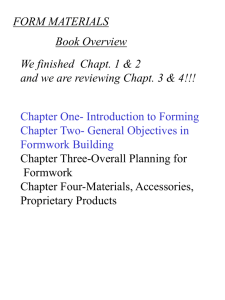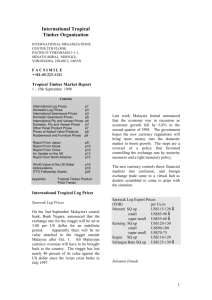Linear Programming Problems: Worksheet
advertisement
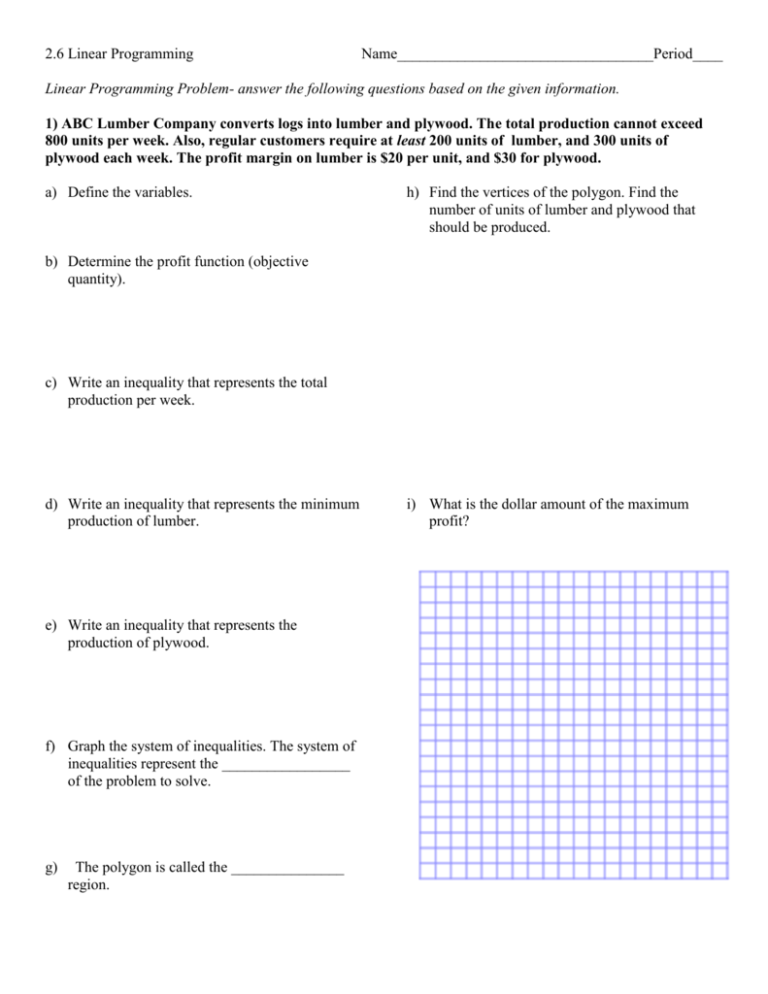
2.6 Linear Programming Name__________________________________Period____ Linear Programming Problem- answer the following questions based on the given information. 1) ABC Lumber Company converts logs into lumber and plywood. The total production cannot exceed 800 units per week. Also, regular customers require at least 200 units of lumber, and 300 units of plywood each week. The profit margin on lumber is $20 per unit, and $30 for plywood. a) Define the variables. h) Find the vertices of the polygon. Find the number of units of lumber and plywood that should be produced. b) Determine the profit function (objective quantity). c) Write an inequality that represents the total production per week. d) Write an inequality that represents the minimum production of lumber. e) Write an inequality that represents the production of plywood. f) Graph the system of inequalities. The system of inequalities represent the _________________ of the problem to solve. g) The polygon is called the _______________ region. i) What is the dollar amount of the maximum profit? 2) Pearson’s Metals mines two ores: R and S. the company extracts minerals A and B from each type or ore. It costs $50 per ton to extract 80 lb of A and 160 lb of B from ore R. It costs $60 per ton to extract 140 lb of A and 50 lb of B from ore S. Pearson’s must produce at least 4000 lb of A and 3200 lb of B. How much of each ore should be processed to minimize cost? What is the minimum cost? a) Fill in the table below where R = ore R and S = ore S. Ore R Mineral A extracted Mineral B extracted b) Determine the cost function (objective quantity). Ore S Total f) How much of each ore should be processed to minimize cost? What is the minimum cost? c) Graph the system of inequalities. d) What is different about this system? e) Find the vertices and evaluate them in the cost function. 3) Writing a system of inequalities for the graph shown below. 2.6 Linear Programming Suppose a sporting goods factory can turn out 5000 balls each week. To meet the needs of its regular customers, the factory must produce 1500 basketballs and 2000 baseballs. If the profit for each basketball is $15 and the profit for each baseball is $5, how many of each type of ball should the factory produce to maximize profit? A small shoe manufacture makes two style of shoes: oxfords and loafers. Two machines are used in the process: a cutting machine and a sewing machine. Each type of shoe requires 15 min per pair on the cutting machine. Oxfords require 10 minutes of sewing per pair, and loafers require 20 minutes of sewing per pair. Because the manufacture can hire only one operator for each machine, each process is available for only 8 hours per day. If the profit is $15 on each pair of oxfords and $20 on each pair of loafers, how many pairs of each type should be produced per day for maximum profit? Writing a system of inequalities for the graph shown below.


